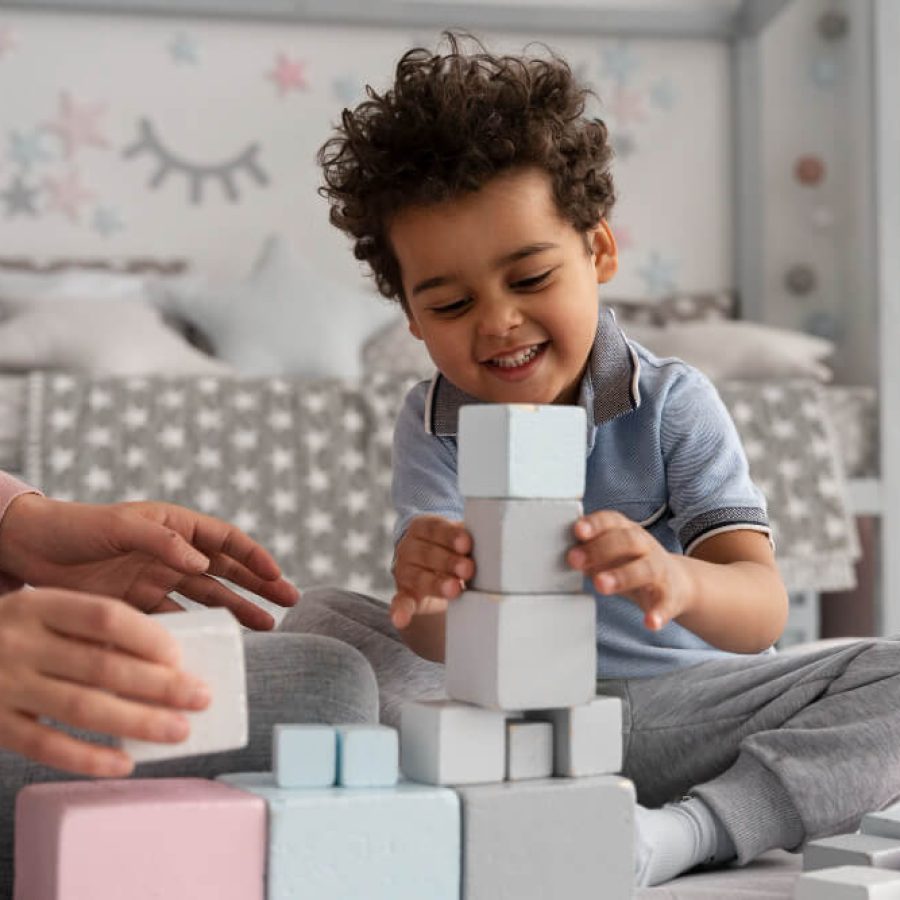If you have an infant, toddler, or preschooler at home, you might have gone through this: they’re playing the same game repeatedly (probably asking you to join in), watching the same movie over and over—and enjoying it every time as if it were the first.
Even if you feel a bit overwhelmed or bored, know that this particular repeated interest is actually a good thing: your child is strengthening their ability to learn through repetition.
How Does Learning Through Repetition Work?
As you watch your child grow and develop, you know they’re surrounded by brand-new experiences every day.
Each new interaction introduces something unique, forming new connections in their brain.
However, this constant flood of discovery can be overwhelming for our little ones. With so much to explore, they need something that brings them a sense of familiarity—something they recognize and understand.
As you might have guessed, this comforting feeling comes from activities and behaviors that are repeated often.
Why do Kids Engage in Repetitive Activities?
As we’ve seen, new discoveries can sometimes cause feelings of uncertainty for children.
Repetitive activities, on the other hand, offer a sense of safety and predictability—something they’ve already seen and know what to expect.
But there’s more to it.
Every (repeated) Experience is New
When first introduced to a story, game, show, or experience, a child doesn’t fully grasp it at once. They’re likely just taking it in—absorbing it, not fully understanding.
When they experience it a second time, they retrieve the connections they made before—and build on them.
With each repetition, new understandings emerge.
They begin to notice the meaning behind the story, or small details that make it even more intriguing.
Yes, even if you’ve watched or read the same thing more times than you can count!
Learning brings an empowering feeling
This sense of familiarity—of knowing what to expect and understanding the meaning behind an activity—shows that your child has explored it deeply. And what comes from that?
A feeling of confidence.
That “I’ve got this—I know what’s going to happen next” moment boosts their self-esteem.
Because repetition is comforting, it helps children feel empowered to keep exploring, making new connections, and understanding the world around them.
Is There a Limit to Repeated Activities?
Naturally, we have to watch for excess. If your child’s interest in a specific topic, activity, or object begins to interfere with other parts of daily life, it might be time to seek guidance from a pediatric psychologist.
Real-life example: A child refuses to leave the house until they’ve watched a specific movie or show, and throws an intense tantrum when they can’t.
Should Parents Encourage Repetitive Activities?
To a healthy extent, yes—parents are encouraged to engage in and support activities their child is drawn to.
That doesn’t mean you should stop offering new experiences or introducing fresh toys, games, or topics. But if your child asks to repeat an experience, let them—and try to notice when and how they’re creating new meaning from it.
Bottom line: is Learning Through Repetition Good For Kids?
Absolutely. Repeated interaction with the same show, book, or object is a natural and valuable part of a child’s development.
Parents should allow their child to explore these moments—and whenever possible, join in. It’s a chance to witness learning in action and see how confidence and self-esteem are built.
Ask your child questions about what you’re watching or reading together. Encourage them to ask questions, too—and use this time to connect and bond.
Of course, repetition isn’t the only path to learning. Spending time with other children also helps build social skills and introduces new ways to play.
Want to learn more about that? Take a look at how parallel play works in child development!


